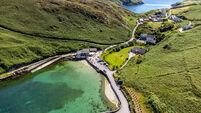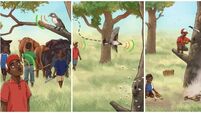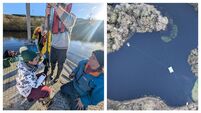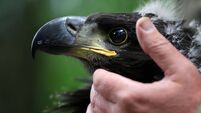Islands of Ireland: Lagoons and mudbanks at County Clare's Inishdadroum

Coney Island and Inishdadroum, Fergus Estuary, County Clare. Inishdadroum is the tiny peninsula at the top of the pic, just left of centre. Picture: Dan MacCarthy
A paradox: The clue to this island’s geography is in its name, or is it? While Inishdadroum, which lies in the outer reaches of the Fergus Estuary in County Clare before that river merges with the River Shannon flowing from the east, is by definition ‘The Island of the Two Hills’ there is a seeming contradiction in either maps or in names pertaining to the island.
The Island of the Two Hills is a clear reference to Coney Island which has two obvious ‘hills’ or ‘backs’. However, the Inishdadroum on the maps is clearly a finger-like peninsula sticking out from Coney Island and separated by the river. It too has the merest pair of distinguishable ‘hills’ but not enough to merit a name for the islet. The separate classification of Inishdadroum probably relates to the importance of seaweed harvesting — the revenues on which poor families often survived.










